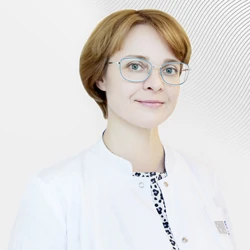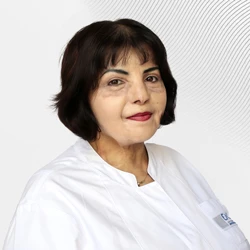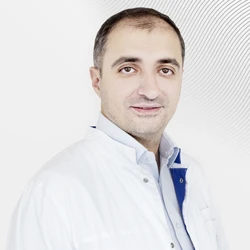Dacryocystorinostomy
Tells Tatiana Balashova,
otorhinolaryngologist-surgeon, PhD
 Dacryocystorinostomy is a surgical treatment technique violations of the outflow of tears from the eye. It allows to normalize the functioning of the nasolacrimal canal and restore communication between the lacrimal sac and the nasal cavity.
Dacryocystorinostomy is a surgical treatment technique violations of the outflow of tears from the eye. It allows to normalize the functioning of the nasolacrimal canal and restore communication between the lacrimal sac and the nasal cavity.
Why is the proper functioning of the lacrimal tract so important for eye health?
The lacrimal glands produce a tear that moisturizes the surface of the eye, ensuring adequate refraction of light rays at the anterior surface of the cornea, its perfect transparency, cleansing, nutrition and prevention of drying. For normal nutrition and washing of the eye surface, at least 1 ml of tear is required, distributed over the surface of the cornea. When crying or irritating the eye, up to 20-30 ml of tears may be released.
Coming from the lacrimal glands, the tear washes the eyeball, then falling into the "lake", which is located in the inner corner of the eye. There are also clearly visible tear points that serve as the entrance openings of the tubules and flow into a special pouch. Each lacrimal sac passes into the nasolacrimal canal, which opens into the nasal cavity. Thus, the tear is evacuated into the nasal cavity through the nasolacrimal canal.
It's pretty easy to find the tear duct. It is represented as a small elastic formation in the inner corner of the eye at the junction with the bridge of the nose.
Dacryocystitis
Дакриоцистит - this is an inflammation of the lacrimal sac, leading to its narrowing and impaired patency.
Causes of dacryocystitis
Inflammatory processes in the nose or paranasal sinuses on the background of acute or chronic infections, traumatic injury, allergic diseases of the eyes and nose, individual features of the structure of the nasolacrimal canal (for example, anatomical narrowing), spasm of the lacrimal canal.
 Symptoms of dacryocystitis
Symptoms of dacryocystitis
- swelling in the inner corner of the eye,
- painful sensations when pressing on the inner corner of the eye,
- sometimes - the appearance of thick discharge in the lacrimal points,
- constant lacrimation from the eye, while the tear does not enter the nasal cavity,
- redness and irritation of the conjunctiva of the eyes.
Diagnosis and treatment of dacryocystitis, indications for surgery
With such symptoms, patients most often turn to to an ophthalmologist. The ophthalmologist performs conservative treatment, including general and local anti-inflammatory, antibacterial, antiallergic drugs, local instrumental methods of treatment - lacrimal tract flushing, augmentation (non-surgical expansion) of the lacrimal canal. If such therapy does not bring the expected result, it is necessary to resort to surgical treatment, before which a CT scan with contrast is necessarily performed.
Operation methods
The operation, dacryocystorinostomy, is performed using external or endoscopic access.
External access is rarely used and has disadvantages: unsatisfactory cosmetic effect, prolonged wound healing, etc.
Endonasal microendoscopic dacryocystorinostomy is less traumatic and less painful for the patient, prevents recurrence of the disease and does not lead to the formation of visible scars. This operation is performed by otorhinolaryngologists together with ophthalmologists. It is the least invasive and most effective, which is why we use this particular surgical treatment technique in our clinic.
At the first stage, under video massage (under the control of endoscopes of the required degree) by an otorhinolaryngologist, the lacrimal bone is exposed through the nasal passage from the diseased side and a bone window about 1-1.5 cm in size is formed. Then a probe is inserted through the lacrimal tubules, which determines the lacrimal sac and performs a wide resection of its anterior wall. Next, the patency of the solution through the lacrimal tubules into the nasal cavity is checked, the lacrimal sac is left open, if necessary, a soft catheter is left in the nasolacrimal canal for 2-3 weeks.
Surgery usually brings relief almost immediately and is well tolerated.
Preparation for the operation

To prepare for the operation, the doctor will prescribe a standard set of tests necessary before the operation under general anesthesia. It will also be necessary to undergo computed tomography (CT) of the lacrimal tract with contrast, consultations with an anesthesiologist, therapist and other specialists (determined during the examination). It is necessary to inform the attending physician, anesthesiologist and therapist about all medications and concomitant diseases.
Rehabilitation after dacryocystorinostomy
Within a few days after the operation, the formed nasolacrimal canal should be flushed. The patient is monitored by an ophthalmologist and an otorhinolaryngologist in the postoperative period.
The effect of dacryocystorhinostomy
Endonasal microendoscopic dacryocystorinostomy helps minimally invasively (non-traumatically), without any external defects, eliminate the symptoms of dacryocystitis, remove the infection site in the lacrimal sac, relieve the patient from lacrimation and prevent inflammatory eye diseases.
Contraindications to dacryocystorinostomy
Contraindications may include any diseases that do not allow surgical treatment in principle, as well as the age of the child under 1.5 years.
Advantages of dacryocystorinostomy in EMC
Dacryocystorinostomy is performed in the EMC:
- only under general anesthesia,
- under navigation control for maximum intervention accuracy, two specialists, an otorhinolaryngologist and an ophthalmologist.
If it is necessary to eliminate any disorders from the nasal cavity (for example, narrowing of the nasal passage or curved nasal septum), EMC ENT surgeons perform simultaneous operations.
Why the EMC
The first and only clinic in Russia, created in the image of the world's leading clinics
EMC is a multidisciplinary center offering patients a high level of medical services and a personalized approach
Worldwide recognition and awards
 Learn more
Learn more
Worldwide recognition and awards
 Certificates and licenses
Certificates and licenses
Make an appointment for a consultation
Specify your contacts and we will contact you to clarify the details
Reviews
and new products of the EMC








.webp)




.webp)

